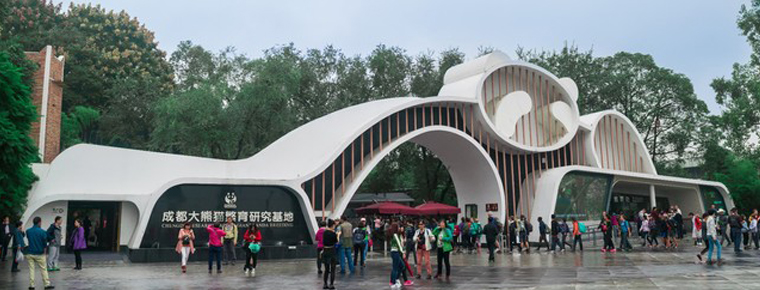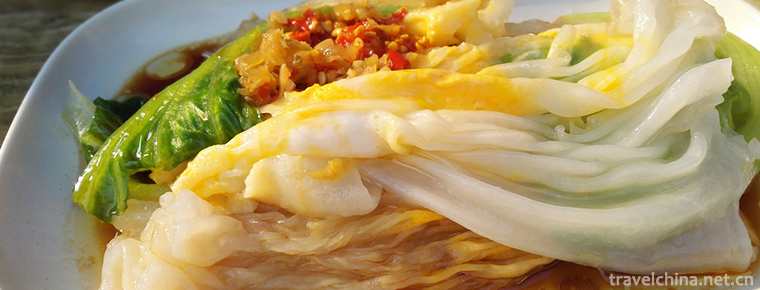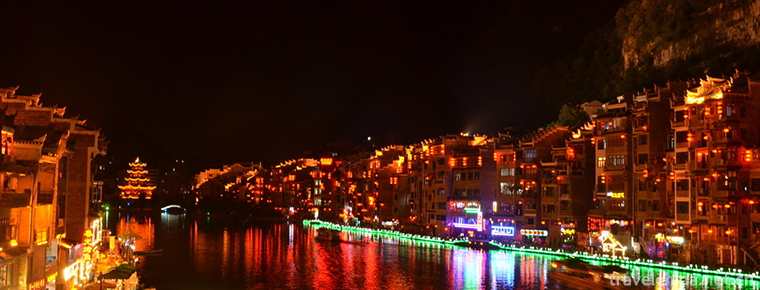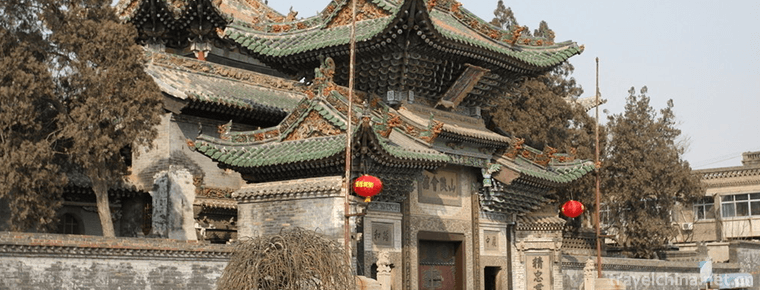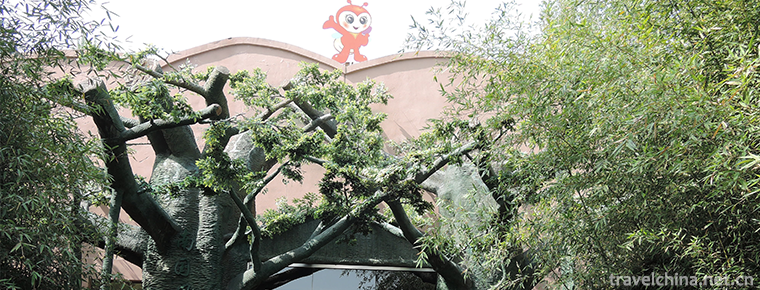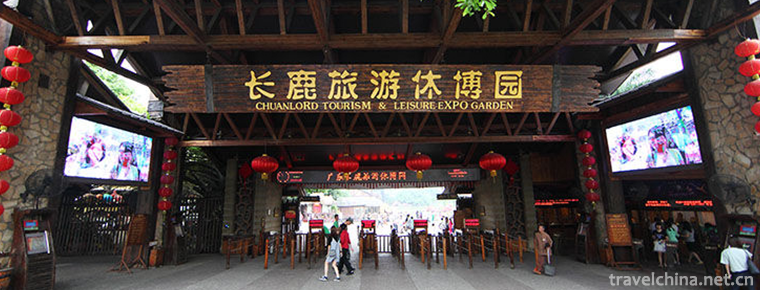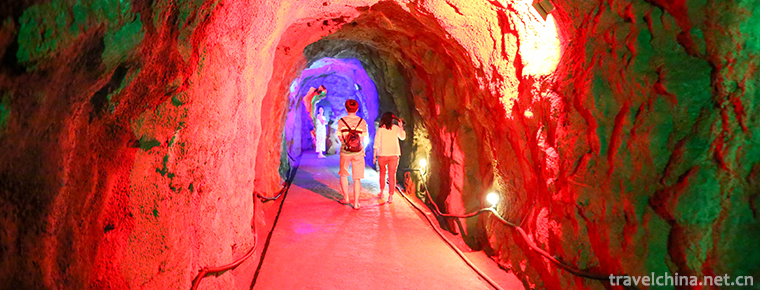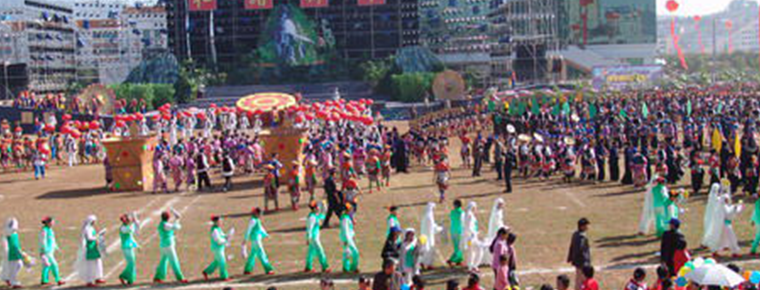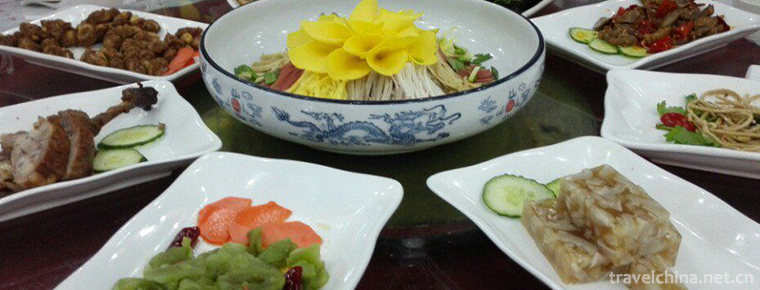Jiaxing Kitchen Head Painting
Jiaxing Kitchen Head Painting
Jiaxing stove painting is a form of Jiaxing folk art. Folk artists use painting pigments to draw patterns on the various parts of the kitchen wall, also known as "kitchen paintings" and "kitchen murals". In all counties (cities, districts) of Jiaxing City, there is a tradition of drawing kitchen head paintings. In the old days, no matter the two-eye stove or the three-eye stove, from the stove hill, smoke box to the stove body were painted with various patterns, with different contents of auspicious words .
In 2007, Jiaxing Kitchen Head Painting was listed in the second batch of intangible cultural heritage list of Zhejiang Province .
On May 23, 2011, Jiaxing Kitchen Head Painting was approved by the State Council and listed in the third batch of national intangible cultural heritage list.
historical origin
The stove was created after human beings introduced fire into their homes. When did kitchen paintings originate? There is no definite explanation so far. According to preliminary textual research, Jiaxing folk kitchen paintings at least appeared in the Ming Dynasty .
Jiaxing kitchen-head painting is a variety of auspicious patterns and literary patterns painted by folk artists in Jiaxing with watercolours and gouache pigments on rural firewood stoves. It is also called "kitchen painting" and "kitchen mural painting". It is a typical unique local art in the fishing and rice town of Jiangnan. It is inferred that, at least in the mid-Qing Dynasty, it has a history of more than 200 years.
Jiaxing, since ancient times, has the reputation of "the land of fish and rice, the house of silk". As early as 7000 years ago, the ancestors of Majiabang planted a paddy field on this land in the south of the Yangtze River. For more than 2,500 years, the ancient canal across Jiaxing has bred the flowing water culture in Wugen Yuejiao.
As the saying goes, people take food as their heaven, and food takes cooking as their first priority. The kitchen head is a part of the residential buildings and the foundation of the food culture of the rural people. The Kitchen Head painting derived from the kitchen head is also one of the hundred craftsmanship of Jiaxing craftsmen. In Jiaxing area, when rural farmers build a new house, they must build a new cooking stove in the kitchen for cooking and cooking. Moreover, the stove head is either flower basket, barrel or square table, or single-eye, double-eye, or three-eye or four-eye stoves, from the stove hill, smoke box to the stove body are painted with various patterns and patterns, with different contents of the text, this kind of murals painted on the stove head by folk masons after the stove is finished, with ink and pigments, giving the stove a rich life. Vigorous breath has injected into the folk culture of Zhejiang, which has been handed down from generation to generation.
For human survival, cooking stoves are the earliest, most common and most intimate cookers. The Kitchen Head painting takes the kitchen as the carrier, which is gradually produced after human beings have the kitchen. The origin of kitchen head painting has not been found yet. However, according to the investigation of the inheritors of the eighth generation of kitchen head painting by Zhao Xiangsong, a folk Kitchen Head painting artist in Jiaxing, Kitchen Head painting in Jiaxing appeared at least in the mid-Qing Dynasty and has a history of more than 200 years.
In the folk, people will use wooden board engraved, pasted on the kitchen to sacrifice the kitchen paper called "kitchen God painting". Jiaxing Kitchen Head Painting refers to the local art that folk artists use the kitchen head for cooking and cooking in the countryside as the carrier and hand-painted on the kitchen wall with various pigments. It is used to decorate and beautify the kitchen head and express the farmers'good wishes. For hundreds of years, Jiaxing Kitchen Head painting gorgeous patterns, rich painting is loved by the people, enduring. In addition to the special cultural characteristics of kitchen head painting, Jiaxing Kitchen Head painting artists also have a unique technological process in drawing kitchen head, which is mainly manifested in the particularity of painting carrier, color matching and space, forming the unique characteristics of Jiaxing Kitchen Head painting which is different from other paintings, thus highlighting the distinct artistic personality.
The shape of Jiaxing stove head is mostly composed of stove foot, stove body, stove table, smoke box, stove hill, stove Juntang, stove dust plate and so on. The kitchen stoves in Jiaxing countryside are mainly built in a corner of the kitchen. There is a long distance and space from the mesa of the stove to the roof. In order to prevent the ash of the firewood pole from flying out from the door of the stove and falling in the bracket of the stove or in the basin and bowl of the stove, a wall should be built in this space to shield it, which is called the stove hill. On one side of Kitchen Mountain is the shrine of Kitchen God and Kitchen King Hall.
The change of Jiaxing stove head is mainly on the stove body. Generally there are three types of flower basket, rectangle and barrel. Flower basket-shaped stove body is built into hexagonal shape, like a hexagonal flower basket, locally known as "flower basket stove"; rectangular stove body built into a square, shaped like a square table or a rectangular table, known as "small square stove"; barrel-shaped stove body built into a semi-circular, shaped like a barrel, known as "barrel stove".
The craft of Jiaxing Kitchen Head painting mainly consists of three parts: kitchen painting, wine blending paint and wet mural painting. The main parts of the kitchen head painting are the kitchen body, smoke box, kitchen hill and kitchen cap. Artists often regard the stove as an independent stage and performance object, and the picture combination is divided into two parts. The first half of the picture pays attention to size contrast, horizontal and vertical contrast, square and circle contrast, the second half or banner equal arrangement, or a painting, the pursuit of a number of ingenious combinations, to achieve a concentrated, perfect, harmonious, unified artistic effect and. Therefore, the number of a stove drawing is more than 15 to 20, less than 10 to 15, varying in size, shape, scattered. Jiaxing Kitchen Head painting because of its large size and complex structure, the local people pay attention to retaining color without leaving blank, so the whole body coloring, heavy makeup painting, a kitchen painting area of less than 4 square meters, more than 6 square meters.
During the Ming and Qing Dynasties, Jiaxing folk masons painted on the wall of the stove head mainly with black pigments, which was related to the scarcity and shortage of painting pigments at that time. Skillful craftsmen often use local materials. A thin layer of dark grey powder is often produced outside the cooker after cooking. Farmers call it radium rust. After scraping it off with a knife, they mix it with a proper amount of water to form a black liquid pigment as a painting pigment. Since the 1980s, most of the pigments used are pearls, three pollens or water powder, watercolor, and now most of them are water powder advertising color. The difference is that Jiaxing folk artists explore a special method of preparing pigments when drawing kitchen head paintings. In order to make the color bright and can penetrate into the kitchen wall without dripping, they mix liquor into the pigments to make the color. Because of the volatilization of alcohol, all kinds of colors in painting can not only penetrate into the lime stove wall in time, but also make the pigments widely inhaled. The method of blending liquor in water powder or watercolor is widely used in folk stove paintings .
Distribution range
Jiaxing Kitchen Head paintings are distributed in the vast rural areas of Jiaxing, and radiation affects surrounding areas such as Shanghai and Hangzhou. In Jiaxing rural areas, villagers are accustomed to using firewood stoves. When farmers build a new house, they must build a new stove in the kitchen. Farmer's stoves are mostly made of green bricks, paper tendons, lime and painted with specific pigments and condiments on the day chosen by the owner by the folk masons.
Main characteristics
The main features of Jiaxing Kitchen Head painting are as follows: in painting techniques, with the kitchen head as the carrier, folk artists draw on the kitchen wall of about 3 square meters each, according to the kitchen stove, conformal shape, multiple pictures combined in a kitchen head, liquor mixed pigments, wet mural painting; in the selection of subject matter and content, most of them are Wugu Fengdeng, Six Animals thriving, more than festive, Tao Li Mantian, and so on, which are matched with auspicious. Words, such as "happiness", "happiness", etc. In artistic expression techniques, the black line is the main outline, with red, blue, white and black as the basic color .
Jiaxing Kitchen Head Painting is a unique "wet mural" created by folk artists in Jiaxing City, Zhejiang Province, because it adopts a new mural painting method popular in the European Renaissance, wet mural painting method is very similar. Wet murals are paintings that begin when the walls are wet and not completely dry. In this way, the painted color easily penetrates into the wet oven wall, and the color mixes with the wall. In the future, with the oven heating and natural volatilization, the oven wall dries up, and the patterns and pictures painted on the oven do not fall off and fade after ten years and twenty years.
Jiaxing Kitchen Head paintings have various patterns and different patterns. It is difficult to have a very precise definition of their classification. Some contents intersect between the two categories. For example, "Songhe Tu" is a combination of plants and animals. The contents presented by the patterns can be roughly divided into seven categories: gods, historical stories, landscapes, animals, auspicious characters, lines and stripes, utensils and plants and fruits.
Because of the different structure of the cooking head, the artistic and visual effects of the cooking head painting are also different. For hundreds of years, the kitchen stoves of thousands of families in Jiaxing countryside have been deeply integrated into the life of farmers. Like a loving mother, she not only holds three meals a day, nurtures generations of farmers, brings endless hope to the farmers, but also permeates with pure and simple local art. By the end of 2009, in more than 1,100 administrative villages in Jiaxing, more than 2,000 kitchen painters were still active in the countryside. They built kitchens and painted kitchens, inheriting the skills handed down from generation to generation.
Production procedure
The kitchen head is painted with pigments. The tools for making kitchen paintings are brushes, which are used for brushing ashes, and bamboo silk fountain pens, brushes, rulers, colorful utensils, pigments, etc. The procedure of making Kitchen Head painting is to first whiten the kitchen head with lime water, then divide the shape and size of the picture according to the structure of the kitchen head, then draw the border with ink, or use lines or simple continuous pattern frame. The pigments used are tri-pollen or water-pollen pigments. In order to make the color bright and can penetrate into the wall of the stove without dripping, the old artists often mix liquor into the pigments. The frame of kitchen head painting is usually square or rectangular, which implies square and upright. In kitchen hill and smoke box, animals, gods of wealth and stories are mainly painted, while flowers and patterns are mainly painted on kitchen feet and body. The authors of kitchen head paintings are mostly masons in the countryside. The basic colors used are red, yellow and blue .
Representative works
The Kitchen Head paintings are bright in color, well-proportioned in picture, reasonable in layout, prominent in theme, full in composition, exaggerated in shape and strong in decoration. The representative work of kitchen head painting is "Pine and Crane in the Spring". It uses pine trees and cranes to form a picture, which implies prolonging life .
representative figure
The inheritors of kitchen head paintings are Shishun Guan of Wang Jiangjing Town, Xiuzhou District, Zhang Jinshou of Honghe Town, Zhao Xiangsong of Tongyuan Town, Haiyan County, Yuan Sinan, Yao Yonglin of Xieqiao Town, and Shen Hualiang of Gaoqiao Town, Tongxiang City. Shi Shunguan, 65, was born in the rural area of Wang Jiangjing, and was listed as the first representative successor of intangible cultural heritage projects in Zhejiang Province. When Shi Shunguan was eighteen years old, he learned cooking skills from the famous local cooking master Ni Chuanjin, and later engaged in cooking painting for a long time. Another Zhao Xiangsong, 62 years old, is the ninth generation kitchen painter of Zhao family in Tongyuan Town, Haiyan County. He was listed as the representative inheritor of the third batch of intangible cultural heritage projects in Zhejiang Province.
Inheritance significance
From the perspective of inheritance and development, we should not only face up to the changes of folk kitchen paintings in contemporary social life, but also correctly guide the development of this art. The existence and development of folk kitchen paintings undoubtedly bring material and spiritual satisfaction to the local people, but also promote the development of local folk art. In recent years, the peasant paintings in Jiaxing have all drawn rich nutrition from the folk kitchen paintings and created many excellent modern folk paintings. The mud incense room of Haiyan Museum specially displays pictures of kitchen paintings and becomes a ready-made textbook for local teenagers to carry out folk art education.
In order to inherit and develop folk kitchen paintings, first of all, we should set up a folk kitchen Painting Research Association like Haiyan County. Through the cooperation of folk kitchen painting artists and art research experts, we should make a systematic study of kitchen paintings. Secondly, the folk kitchen painting exhibition hall will be opened. Combining with tourism development, a kitchen painting exhibition hall is specially opened. The exhibition hall can set up "Kitchen Picture Exhibition Hall", "Kitchen Picture Imitation Exhibition Hall", "Kitchen Picture Demonstration Hall", "Kitchen Picture Museum of Farmer's Kitchen" and "Model Kitchen Picture Sales Hall" to comprehensively let the masses and tourists understand folk kitchen painting art and publicize Jiangnan folk culture. Thirdly, the folk kitchen painting competition will be held from time to time to excavate new folk kitchen painters and improve kitchen painting skills. Fourthly, we should correctly guide the application of modern ceramic tiles in stoves. Strictly speaking, ceramic tile stove painting has been a reform and innovation of the traditional form of stove painting, but because of the uniformity of the content, it becomes dull and boring. Moreover, because ceramic tile stove painting pays too much attention to the practical value of commodities, it also lacks the aesthetic feeling of art. Therefore, the author believes that it is not advisable to innovate at the expense of the naive and simple artistic beauty of folk painting. Innovation should show the unique charm of kitchen head painting. It can change the way of water powder or watercolor painting in the past. Painting directly on ceramic tiles with oily pigments can keep the kitchen head clean and sanitary, on the other hand, it can also make the kitchen head painting maintain its own characteristics and long-term preservation. Deposit .

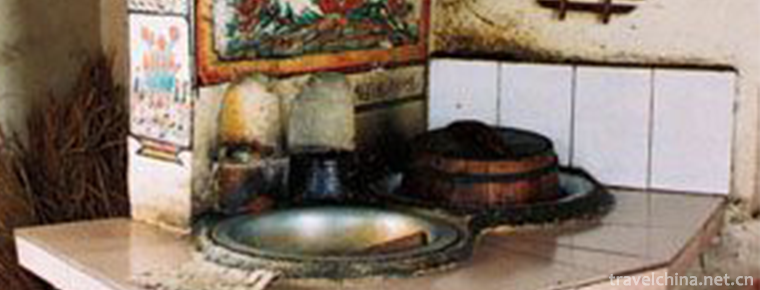
-
Chengdu Panda Base
No. 1375 panda Road, Chenghua District, Chengdu city, Sichuan province.
Views: 223 Time 2018-09-28 -
steamed vermicelli roll
Intestinal powder originated in Luoding, Guangdong Province, has been spread throughout the country. According to geography (taste), it can be distinguished from the well-known .
Views: 397 Time 2018-11-02 -
Dongjiang Lake Tourist Area Coconut City
Dongjiang Lake Scenic Tourist Area is located in Zixing City, Hunan Province. It is a national scenic spot, a national 5A scenic spot and a national wetland park..
Views: 187 Time 2018-12-12 -
Libo Karst
Maolan National Karst Forest Nature Reserve, located in the southern suburb of Libo County, is a well-preserved natural forest vegetation in the karst landform of the central .
Views: 156 Time 2019-01-29 -
Shanshan guild hall
Shanxi-Shaanxi Guild Hall is the place where Shanxi and Shaanxi merchants and businessmen associate with each other and worship gods. It combines exquisite architectural.
Views: 168 Time 2019-02-08 -
Yishui Underground Fluorescent Lake Scenic Area
Yishui underground fluorescent Lake tourist area is now renamed as the fluorescent insect water tunnel tourist area..
Views: 217 Time 2019-03-03 -
Changlu Tourist Xiubo Garden Scenic Area
Changlu Tourist Xiubo Park, or Changlu Environmental Resort Farm (hereinafter referred to as "Changlu Farm"), became the national 5A scenic spot in November 2014. It is the only national 5A .
Views: 204 Time 2019-03-17 -
Ziweidong Scenic Area
Seeing the pronoun of the first reaction of "purple cave" to "immortal" cultivation and residence, we often enchase that fairyland dream on this name..
Views: 131 Time 2019-03-22 -
Dai nationality Zhang ha
Dai Zhangha, also known as "Zanha", is a traditional form of Dai folk song, which is spread in Xishuangbanna Dai Autonomous Prefecture in the southern border of Yunnan Province and Dai villa.
Views: 115 Time 2019-04-24 -
Really Different zhenbutong Making Skills of Luoyang Watermat
It's really different from Luoyang's water mat making skills. The traditional handicraft in Luoyang City, Henan Province, is one of the national intangible cultural heritages..
Views: 125 Time 2019-07-25 -
Jiushi Scenic Area
Jiushi scenic area is located in Anning Township, Longmatan District, 8 km away from Luzhou city. It is named after the nine peaks in the scenic area, which are shaped like lions..
Views: 159 Time 2020-10-15 -
Chengdu Yongling Museum
The Royal Museum of Wang Jian, located at No.10 Yongling Road, Jinniu District, Chengdu, covers a total area of 54000 square meters, and is composed of three parts: cultural relics protection area, comprehensive museum and garden protection area..
Views: 123 Time 2020-10-18
